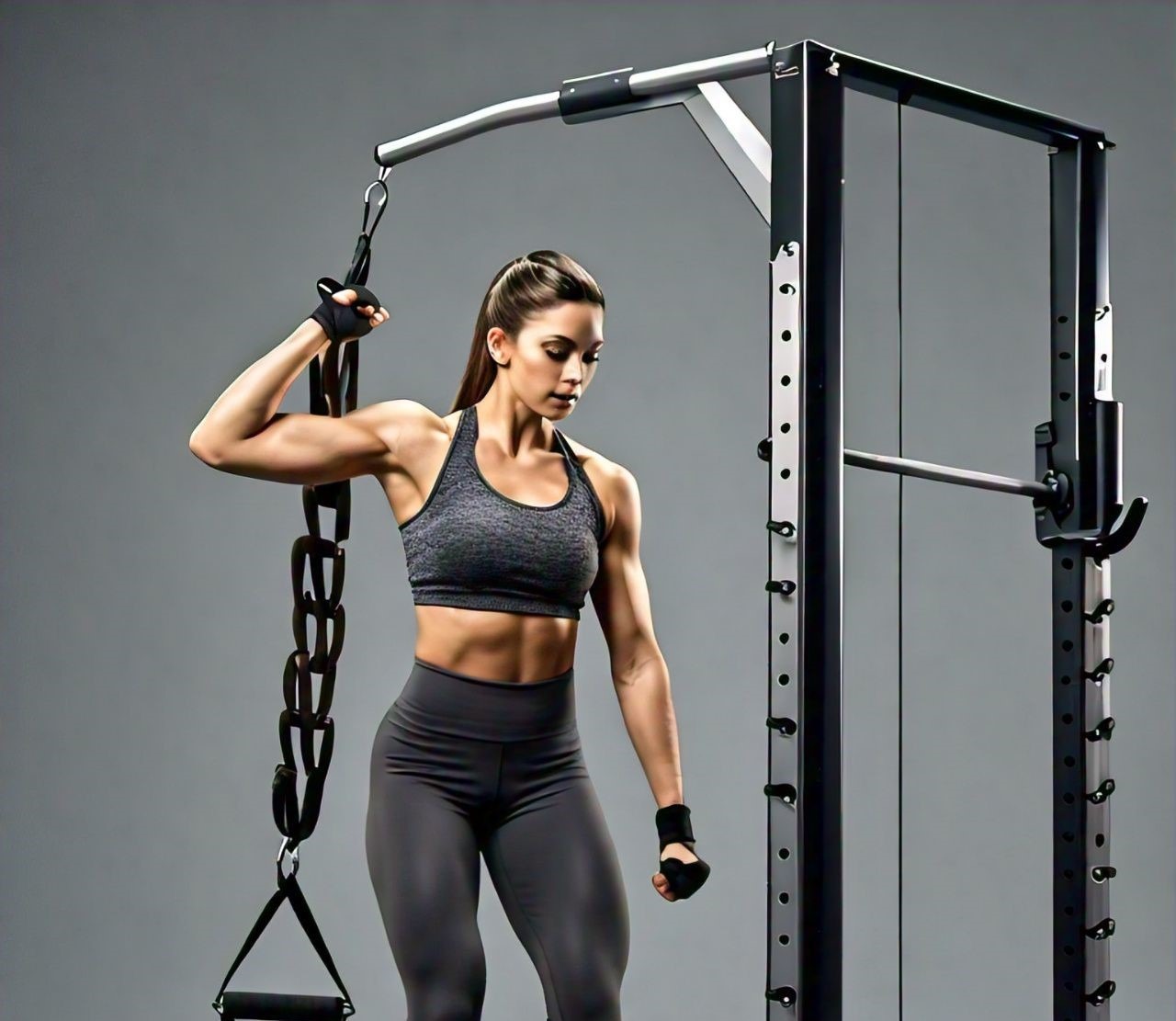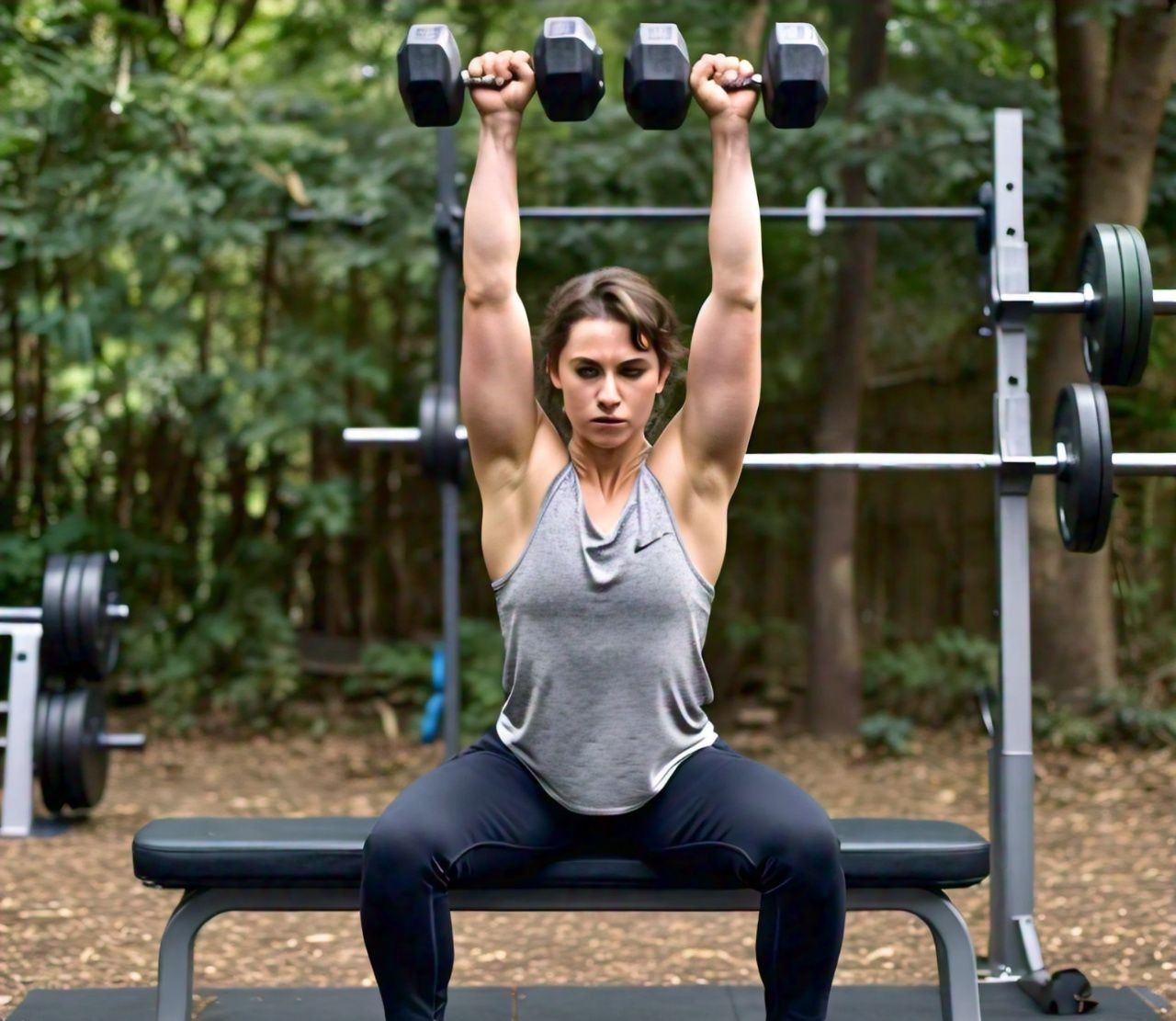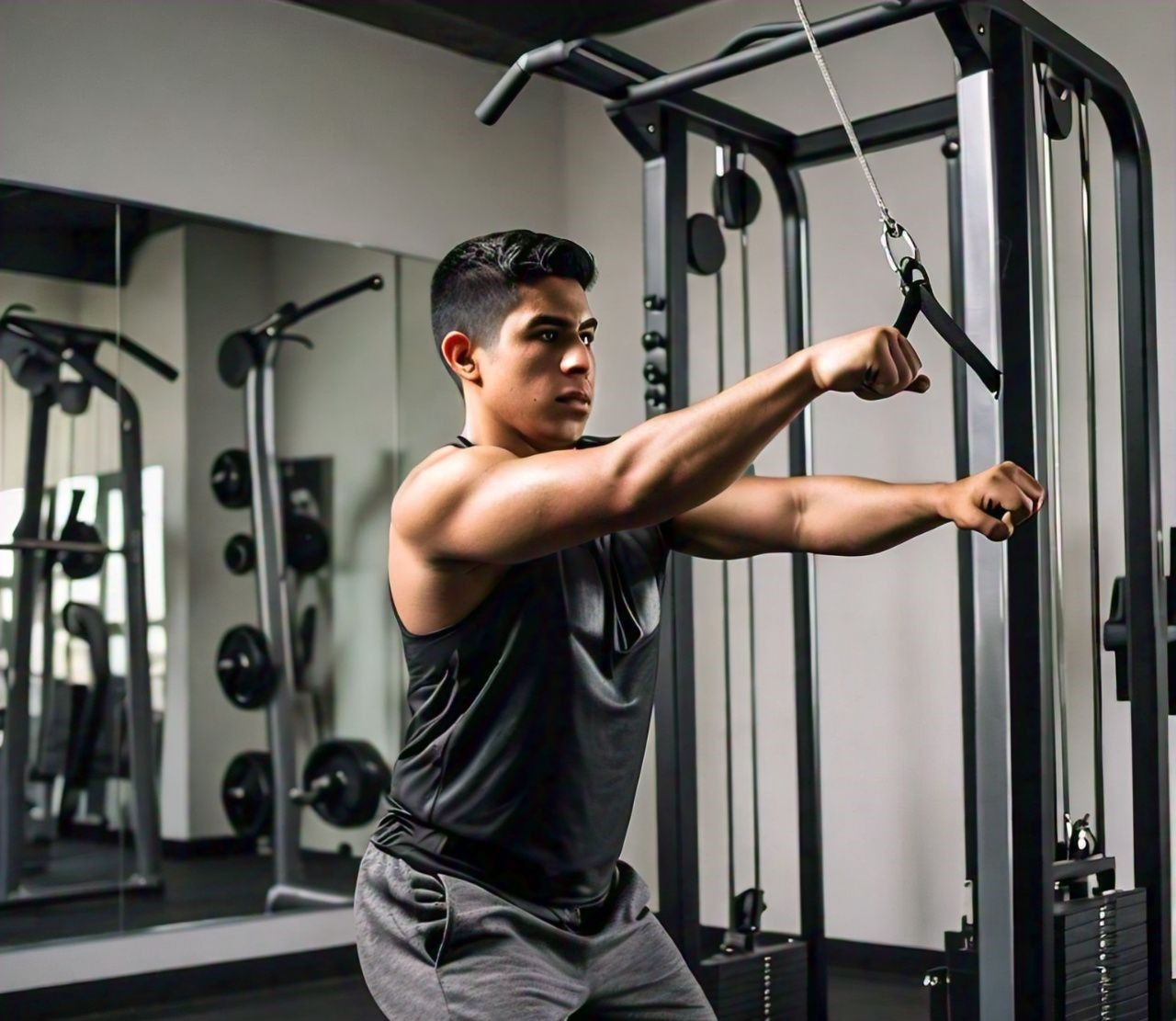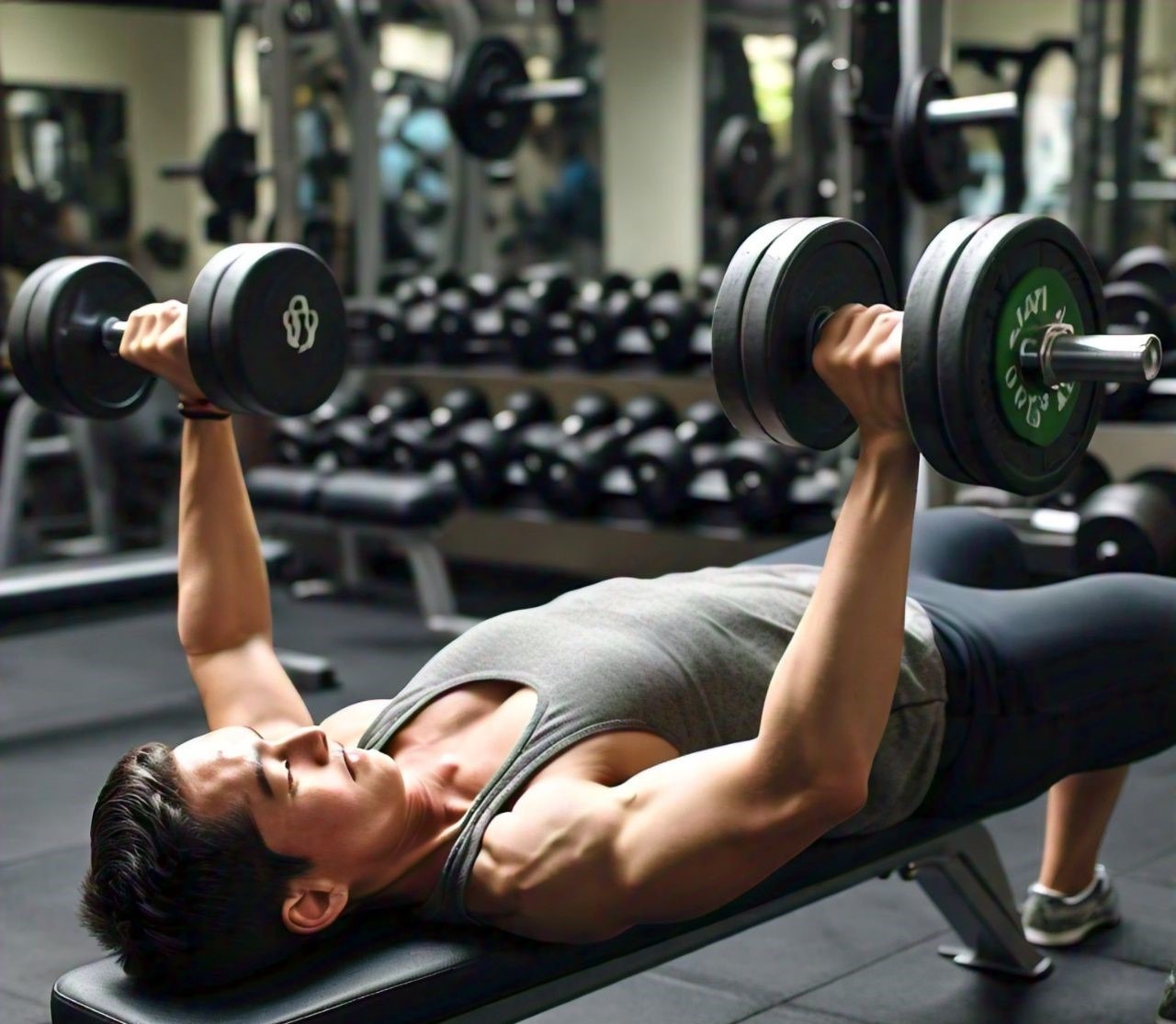Top 9 New Front Delt Exercises
Front delt exercises are crucial for anyone looking to build strong, well-rounded shoulders. The front deltoid, or anterior deltoid, plays a vital role in shoulder movement and stability. Incorporating effective front delt exercises into your workout routine can enhance your overall shoulder strength and aesthetics. In this comprehensive guide, we will explore the top 9 new front delt exercises that you should consider adding to your fitness regimen. Each exercise targets the front delts in a unique way, ensuring balanced and effective shoulder development.
1. Front Dumbbell Raise

Benefits of the Front Dumbbell Raise
The front dumbbell raise is a classic exercise that effectively isolates the front delts. This exercise is straightforward yet highly effective, making it a staple in many shoulder workout routines.
- Isolation: Targets the front delts specifically.
- Strength Building: Enhances strength in the anterior deltoids.
- Simplicity: Easy to perform and requires minimal equipment.
How to Perform the Front Dumbbell Raise
- Stand with your feet shoulder-width apart, holding a dumbbell in each hand with your palms facing your thighs.
- Keeping your arms straight, lift the dumbbells in front of you until they are at shoulder height.
- Pause for a moment, then slowly lower the dumbbells back to the starting position.
- Repeat for the desired number of repetitions.
2. Barbell Front Raise

Benefits of the Barbell Front Raise
The barbell front raise is another excellent front delt exercise that allows you to lift heavier weights, thereby promoting greater muscle growth.
- Heavy Lifting: Enables lifting heavier weights compared to dumbbells.
- Muscle Activation: Engages the front delts effectively.
- Versatility: Can be performed with different grip widths to target various parts of the deltoid.
How to Perform the Barbell Front Raise
- Stand with your feet shoulder-width apart, holding a barbell with an overhand grip.
- Lift the barbell in front of you until it reaches shoulder height.
- Hold the position briefly, then lower the barbell back to the starting position.
- Repeat for the desired number of repetitions.
3. Cable Front Raise

Benefits of the Cable Front Raise
The cable front raise offers constant tension on the front delts throughout the movement, making it one of the most effective front delt exercises.
- Constant Tension: Provides continuous resistance.
- Range of Motion: Allows for a greater range of motion compared to free weights.
- Versatility: Can be performed with different attachments and angles.
How to Perform the Cable Front Raise
- Stand facing a cable machine with the pulley set at the lowest position.
- Attach a handle to the cable and hold it with your palm facing your thigh.
- Lift the handle in front of you until it reaches shoulder height.
- Pause briefly, then slowly lower the handle back to the starting position.
- Repeat for the desired number of repetitions.
For more detailed information about fitness equipment, check out this comprehensive guide on Reality N Fact.
4. Plate Front Raise

Benefits of the Plate Front Raise
The plate front raise is a simple yet effective front delt exercise that uses a weight plate instead of dumbbells or a barbell.
- Simplicity: Easy to perform with minimal equipment.
- Grip Variations: Different grip options to target the deltoids differently.
- Core Engagement: Engages the core muscles for stability.
How to Perform the Plate Front Raise
- Stand with your feet shoulder-width apart, holding a weight plate with both hands in front of your thighs.
- Lift the plate in front of you until it reaches shoulder height.
- Pause briefly, then lower the plate back to the starting position.
- Repeat for the desired number of repetitions.
5. Arnold Press

Benefits of the Arnold Press
The Arnold Press, named after Arnold Schwarzenegger, is a compound movement that targets the front delts while also engaging the lateral and rear deltoids.
- Compound Movement: Targets multiple parts of the deltoid.
- Range of Motion: Provides a full range of motion for the shoulders.
- Shoulder Stability: Enhances shoulder stability and strength.
How to Perform the Arnold Press
- Sit on a bench with a back support, holding a dumbbell in each hand at shoulder height with your palms facing you.
- Press the dumbbells overhead while rotating your palms to face forward.
- Reverse the motion to return to the starting position.
- Repeat for the desired number of repetitions.
6. Overhead Press

Benefits of the Overhead Press
The overhead press is a fundamental shoulder exercise that primarily targets the front delts, along with the lateral delts and triceps.
- Strength Building: Builds overall shoulder and upper body strength.
- Functional Movement: Mimics natural shoulder movements.
- Versatility: Can be performed with a barbell, dumbbells, or kettlebells.
How to Perform the Overhead Press
- Stand with your feet shoulder-width apart, holding a barbell at shoulder height with an overhand grip.
- Press the barbell overhead until your arms are fully extended.
- Lower the barbell back to shoulder height.
- Repeat for the desired number of repetitions.
7. Front Delt Cable Pull

Benefits of the Front Delt Cable Pull
The front delt cable pull is an effective isolation exercise that targets the front delts with constant tension throughout the movement.
- Isolation: Focuses solely on the front delts.
- Constant Tension: Provides continuous resistance for better muscle activation.
- Adjustable Resistance: Easily adjust the weight to match your strength level.
How to Perform the Front Delt Cable Pull
- Stand facing a cable machine with the pulley set at the lowest position.
- Attach a handle to the cable and hold it with your palm facing your thigh.
- Pull the handle upward and across your body to shoulder height.
- Slowly return to the starting position.
- Repeat for the desired number of repetitions.
8. Incline Front Raise

Benefits of the Incline Front Raise
The incline front raise is a variation of the front raise that targets the front delts more intensely by changing the angle of the movement.
- Increased Intensity: Greater focus on the front delts due to the incline angle.
- Muscle Activation: Enhances muscle activation in the anterior deltoids.
- Variety: Adds variety to your shoulder workout routine.
How to Perform the Incline Front Raise
- Set an incline bench to a 45-degree angle and lie face down on the bench.
- Hold a dumbbell in each hand with your palms facing your thighs.
- Lift the dumbbells in front of you until they reach shoulder height.
- Pause briefly, then lower the dumbbells back to the starting position.
- Repeat for the desired number of repetitions.
9. Push Press

Benefits of the Push Press
The push press is a dynamic exercise that combines a squat with an overhead press, effectively targeting the front delts while also engaging the entire body.
- Full-Body Workout: Engages multiple muscle groups.
- Power Development: Enhances explosive power and strength.
- Functional Movement: Mimics natural, everyday movements.
How to Perform the Push Press
- Stand with your feet shoulder-width apart, holding a barbell at shoulder height with an overhand grip.
- Dip your knees slightly, then explosively straighten your legs while pressing the barbell overhead.
- Lower the barbell back to shoulder height.
- Repeat for the desired number of repetitions.
Combining Front Delt Exercises for Maximum Results
Incorporating a variety of front delt exercises into your workout routine can help you achieve balanced and effective shoulder development. Here’s a sample workout plan that combines these exercises for maximum results:
Sample Front Delt Workout Routine
- Warm-Up:
- 5-10 minutes of light cardio (e.g., jogging, jumping jacks)
- Dynamic shoulder stretches (e.g., arm circles, shoulder rolls)
- Workout:
- Front Dumbbell Raise: 3 sets of 12-15 repetitions
- Barbell Front Raise: 3 sets of 10-12 repetitions
- Cable Front Raise: 3 sets of 12-15 repetitions
- Plate Front Raise: 3 sets of 12-15 repetitions
- Arnold Press: 3 sets of 10-12 repetitions
- Overhead Press: 3 sets of 8-10 repetitions
- Front Delt Cable Pull: 3 sets of 12-15 repetitions
- Incline Front Raise: 3 sets of 12-15 repetitions
- Push Press: 3 sets of 8-10 repetitions
- Cool-Down:
- 5-10 minutes of light stretching focusing on the shoulders and upper body
Tips for Effective Front Delt Training
To maximize the effectiveness of your front delt exercises, consider the following tips:
Proper Form and Technique
Maintaining proper form and technique is crucial for preventing injuries and ensuring that you effectively target the front delts. Focus on controlled movements and avoid using momentum to lift the weights.
Progressive Overload
Gradually increase the weight and resistance of your front delt exercises to continue challenging your muscles and promoting growth. Progressive overload is key to building strength and muscle mass.
Balanced Shoulder Training
In addition to front delt exercises, ensure that you also include movements that target the lateral and rear delts. Balanced shoulder training helps prevent muscle imbalances and enhances overall shoulder health.
Rest and Recovery
Allow adequate time for rest and recovery between shoulder workouts. Overtraining can lead to injuries and hinder your progress. Aim for at least 48 hours of rest before training the same muscle group again.
Advantages of Strong Front Delts
Improved Shoulder Aesthetics
Well-developed front delts contribute to a more defined and aesthetically pleasing shoulder appearance. Strong front delts enhance the overall look of your upper body.
Enhanced Athletic Performance
Strong front delts improve your performance in various sports and physical activities that require pushing, lifting, and throwing movements. Enhanced shoulder strength can give you a competitive edge.
Better Posture and Shoulder Health
Training the front delts helps improve shoulder stability and posture. Strong front delts can prevent common issues such as rounded shoulders and contribute to overall shoulder health.
Increased Upper Body Strength
Front delt exercises contribute to overall upper body strength, making everyday tasks easier and enhancing your performance in other upper body workouts.
Conclusion
Incorporating the top 9 new front delt exercises into your workout routine can significantly enhance your shoulder strength, aesthetics, and overall performance. Each exercise targets the front delts in a unique way, ensuring balanced and effective shoulder development. Remember to focus on proper form, progressive overload, and balanced shoulder training for the best results. With consistent effort and dedication, you can achieve well-rounded and strong shoulders.
For more information on fitness and health, check out these resources:
Explore more articles on our site:
- How to Increase Running Stamina for Beginners at Home
- What Happens if You Don’t Get Enough Sleep Consistently: Effects and Solutions
- The Ultimate Guide to Healthy Living in 2024
- The Future of Artificial Intelligence: What to Expect
- Unlocking the Potential of Chat GPT Software: Revolutionizing AI Conversations
- Best Sleeping Position for Peripheral Artery Disease [New 2024]
- How to Increase Running Stamina for Beginners at Home
- 5 New Inner Thigh Exercises for Men and Women




